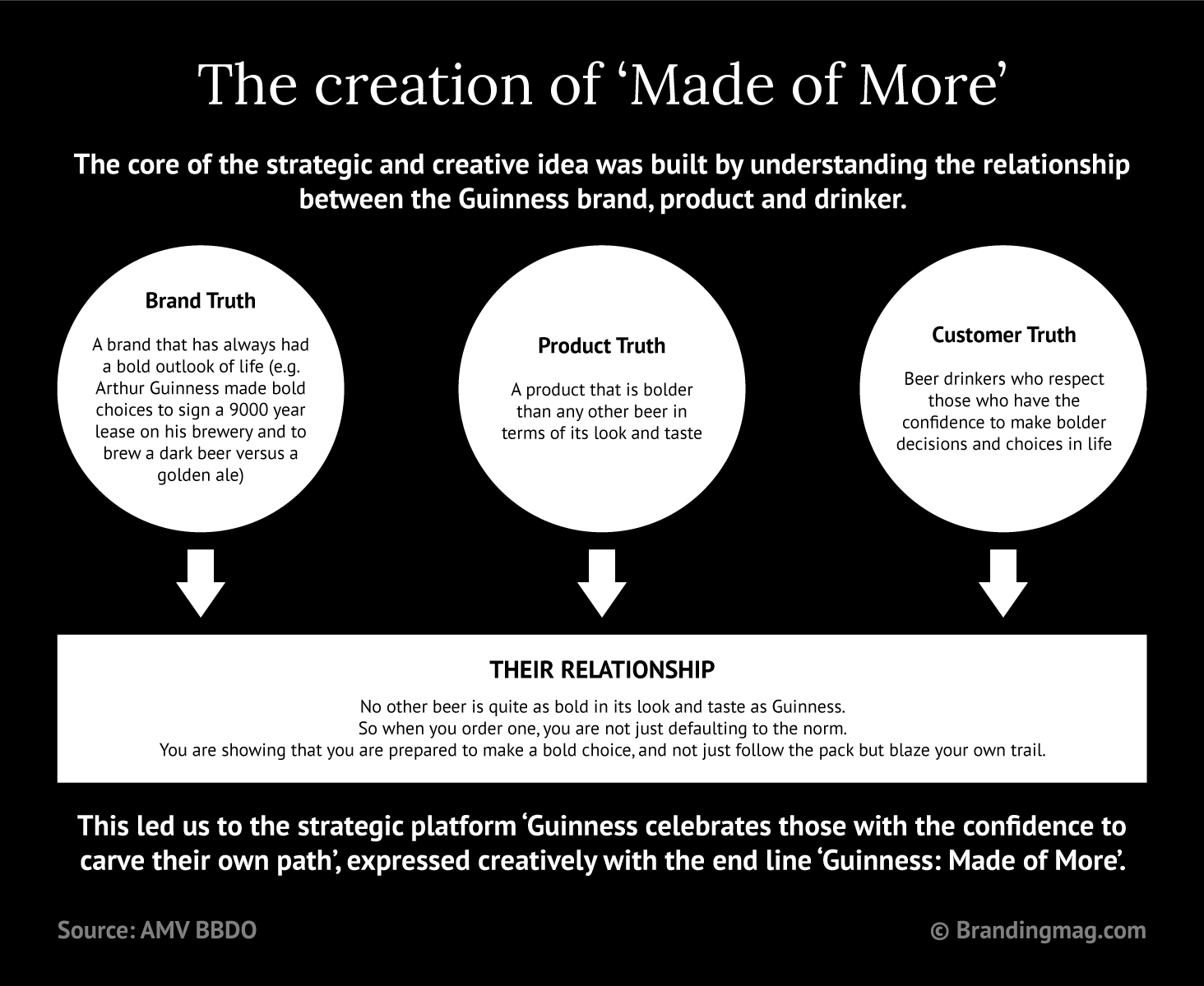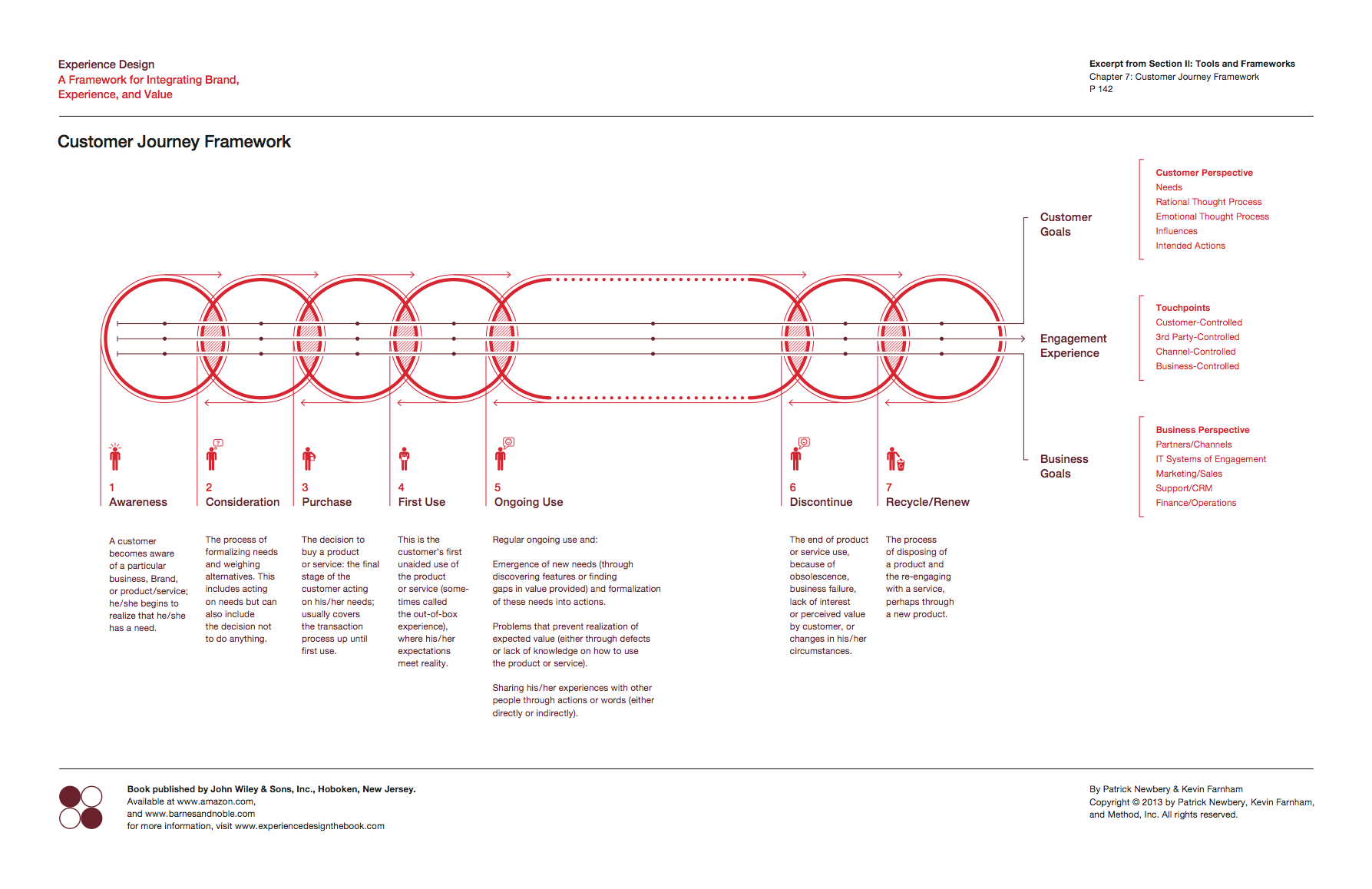
For years marketers have obsessed about finding and exploring a singular narrative that galvanizes all brand communication efforts and delivers a unified story. This quest for a singular idea is the reason every brand communication sequence is expected to start with a Big Idea. However, ideas are fleeting so brands need something more.
What is the Big Idea?
According to Smart Insights, “Any new campaign will need a hook or theme that you’ll want people to recall, share and act upon. A campaign’s big idea is the overarching message that underpins all elements of a campaign in order to resonate with the target audience. The big idea will need to be rooted in a piercing insight and linked to the campaign’s objectives to ensure it has maximum impact and relevance.”
A Big Idea is a core concept or proposition based on research and informed by insight that serves as the focal point or springboard for tactical engagement. Big Ideas are anchors that give a strong sense of direction for brand communications and actions.
However, Big Ideas are limited in their longevity of application. Since the Big Idea is expected to anchor a brand’s specific action or communication sequence, it means at the start of every new sequence, a new Big Idea must be identified and adopted. This impacts cumulative brand equity over time and requires extra upkeep to achieve a singular, abridged, and long-lasting narrative that will drive the business forward.
This is where brand platforms have the advantage. They are the springboard as well as the anchor for the brand’s ideas. Creative ideas can be continually weaved out of a strong Brand Platform.
What is a Brand Platform?
According to SendPulse, A Brand Platform is a marketing idea created to describe the distinctive features of a brand both ideologically and visually. It is essential to form the holistic image of the business and provide a unique offering for the target audience. The Brand Platform is often regarded as being timeless because it takes its form from the brand’s identity, and serves as the constant foundation for the brand. While the Big Idea for brand communication can change as competitive context and target audiences change, the Brand Platform doesn’t change.
Coherent brand communication is often based on a clear and compelling Brand Platform. With Brand Platforms we can synthesize all the elements of the brand identity including the history, vision, values, positioning, promise, visual identity, tone, and more.
A Big Idea is timely as it strives to connect a brand’s identity to culture whereas a Brand Platform is timeless because it is a foundational philosophy inherent to the brand’s identity.
Think of a Brand Platform as ground zero for brand communication. It is the epicenter for all brand expressions and the core philosophical center for the brand’s activities.
– Gidyon Thompson, strategist @ eikon grae
Distilled from a brand’s purpose, a platform defines a brand’s personality and is enriched by a brand’s cohesive communication. It can start as a brand’s slogan, or as a campaign tagline like Nike’s “Just do it”, but it must reflect a fundamental human truth that isn’t necessarily only focused on the sales of a product, but on a philosophy.
Big Ideas change and are retired after a campaign, while a Brand Platform evolves and adapts to innovations and market trends.
Progress with every walk: Johnnie Walker
In 1999, Johnnie Walker launched the Keep Walking campaign. It was strongly influenced by The Striding Man, which cartoonist Tom Browne first sketched on a napkin over lunch. Previously, Johnnie Walker was promoted through seven separate advertising campaigns, that means seven different Big Ideas with seven disconnected creative executions. The seven ideas didn’t support each other or build a singular narrative. However, on 8 June 1999, it was time to bring the whole thing under one roof and give Johnnie Walker the coordinated strategy it deserved. The brand moved beyond introducing new ideas to articulating a singular framework that guides all of the brand’s expressions.
The “Keep Walking” Brand Platform core message was to “inspire men to progress” (a fundamental human truth that isn’t necessarily focused on sales of a product but of a philosophy). Johnnie Walker describes it as a rallying cry for progress, encouragement in adversity, a joyful expression of optimism, and as the best piece of advice you’re ever likely to hear.
While a Big Idea would’ve only been relevant within the lifetime of a campaign, this Brand Platform guides the overall brand communications and brand experiences, before, during, and after a campaign – and even the future of the brand.
Working with actor Harvey Keitel, Johnnie Walker released a TVC to launch the campaign. They have since created brand films to embolden and enrich the narrative by showcasing people and their journeys of progress. The brand only focuses on showing many different ways to talk about progress.
More recently, the brand invested about £185m into an experiential dimension of the Brand Platform by creating Johnnie Walker Princes Street, an eight-floor visitor attraction located in Edinburgh that features shops, a whisky cellar and two rooftop bars. This is not a temporary installation designed to just sell products. It is a physical location designed to help customers experience the brand’s message. It is where “Keep Walking” comes to life.
Since they created a clearly defined Brand Platform, they were able to evolve to launch the facility and invest in the physical structure that is now an integral part of the overall brand experience. According to Edinburgh News, despite the pandemic the facility welcomed more than 300,000 visitors from 97 different countries around the world in 2021. Through consistency of messaging and the utilization of their Brand Platform, the location has become a pilgrimage for whisky lovers globally.
Johnnie Walker broke into the top 10 of Kantar BrandZ’s Most Valuable UK Brands 2021 ranking, coming in ninth with an estimated value of $8.3bn. The whisky brand is in good company, in a list topped by Vodafone ($30.9bn), HSBC ($15.6bn) and Shell ($15.4bn), and is worth more than Unilever’s Dove ($7.3bn) in tenth position.
Why building a brand platform is important
- Brand clarity
Brand Platforms are a singular idea that serves as the single running manifesto of the brand. It is the “one thing” the brand is about. For years, Coca-Cola drove their entire brand vehicle on the premise of “Happiness For All.” Customers know Coca-Cola as the happiness brand. Whether in the development and execution of campaigns under multiple slogans like “Open Happiness” and “Choose Happiness,” or in product immersive experiences like the Coca-Cola Happiness Machine, the manifesto and message is always clear to consumers. A Brand Platform helps your audience make sense of what your brand is really about. - Brand propositional cohesion
One struggle for marketing communication professionals are narratives. Across the business engagement journey, multiple propositions are introduced and maintained like the advertising idea, the brand positioning statement, the PR policy, etc. New thinking is constantly introduced to all aspects of the business. However, when a brand evolves a Brand Platform, clear synthesization of all brand propositions becomes possible because the brand is saying just one thing across the board. Brand Platforms can easily evolve without losing the thread of the brand. - Faster and richer brand salience
Brand salience refers specifically to whether people are aware enough of your brand to immediately think of you when it’s time to make a purchase. For example, if people feel like buying shoes to live an active life, they think of Nike first. They think Nike because the “Just Do It” Brand Platform has effectively positioned the brand as the brand for action. With a well-developed Brand Platform your brand will build faster salience. - Positive brand association
Brand platforms are philosophical propositions about an ideal world that the brand promotes. This means they offer a beautiful perspective on how the world could be better. Guinness’ brand platform “Made of Black” speaks to originality, authenticity and self-awareness. Coca-Cola’s “Real Magic” is based on connectivity. Coca-Cola believes, “Real magic happens when people get together and when what we share in common is greater than what sets us apart.” These propositions quickly build positive associations for the brand. Through these platforms, the brand is seen as an active participant in building a great world. - Increase in brand loyalty
With resonance comes a deep desire to pay more attention, engage with and even follow the brand. You want your customers to go beyond buying your product to feeling like they are part of the vision you are building. You want customers to feel like they are part of a movement.
How to build brand platforms
- Articulate a brand truth
Brand Platforms are not just nice catch-phrases. It goes beyond that, it’s a fundamental human truth that the brand can champion because of its relationship to the reality the truth describes. To build a strong platform you need to ask, what is true about your brand? You could focus on the truth about the product formulation like Guinness does, or a brand journey like Johnnie Walker, or generally how consumers perceive or see the brand. Then, tie that to how consumers see themselves or want to see themselves. At this level, you are simply looking for a fundamental human truth that your brand is better suited to defend, promote and grow with. The intersection of brand truth and consumer truth is a good place to start drawing inspiration for your Brand Platform. No matter what the proposition is, never forget that the consumer should care enough about it. They should see how it impacts their everyday life, with or without your product.
Click image to view case study - Spread the Word
A platform can be introduced as a tagline or campaign slogan, but the ultimate goal is to give it enough visibility that it will slowly begin to catch the eyes and ears of people and start to make sense. As you embark on spreading your new brand gospel, remember people will not line up behind a manifesto they don’t understand. Be creative with your brand education to demonstrate the density of the proposition and work it till it becomes a brand asset. Go beyond visibility and engage them through storytelling that enriches the perspective of the proposition so that your audience clearly understands the “what” and “why” of your proposition. All Brand Platforms are brand assets but not all brand assets are Brand Platforms. I’ve seen many brand managers and brand owners try to force a campaign tagline into a Brand Platform. For a proposition to become a Brand Platform it must represent a core human truth that resonates with the realities of the consumers, seen and understood. Then, it must be malleable enough to guide the thinking of the brand across all dimensions. It should be the guiding philosophy for integrated marketing communication, but not necessarily tied to a brand sales agenda. - Bring it to the center
When you are sure that you’ve found the truth, and it’s gaining resonance, you can make your entire brand engagement process ride on the thinking.
Click image to enlarge – Customer Journey Framework by Method Using the Patrick Newberry, Kevin Farnham and Method brand engagement framework, the Brand Platform will be the running line sandwiched between the customer goals and business goals. It will be the thinking that the engagement experience is built around. At every touchpoint, the philosophy of the Brand Platform will have to be seen, heard, felt, and understood. It must permeate every realm of business communication and engagement. “Keep Walking” isn’t just a spot or print ad, it’s locked into a physical location, packaging policy, influencer engagement, global campaign, etc. It is the Johnnie Walker brand’s thinking.
Every touchpoint that defines the brand must be an outlet to sharing the brand’s thinking. The thinking must connect with consumers where they are in a very authentic and human way. This is why it is called a platform, because every brand engagement activity across the customer engagement journey map will have to take its life from and be enriched by the thinking.
It takes time, effort, and budget to build a solid Brand Platform. However, that investment is justified in the stability, structure, and focus that Brand Platforms deliver. Don’t just think about the Big Idea for your next campaign, take it a step further and build a platform that will sustain your brand experience into the future.
Cover image source: Daniel Vogel